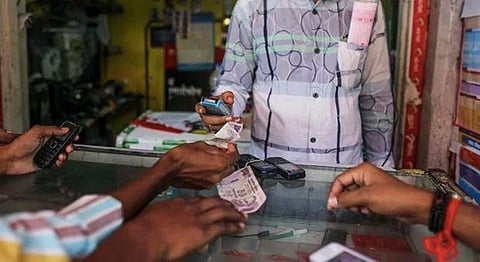
- HOMEGROWN WORLD
- #HGCREATORS
- #HGEXPLORE
- #HGVOICES
- #HGSHOP
- CAREERS
- ABOUT US
- CONTACT US

On February 4, 2015, Sunitha Krishnan, a crusader fighting against human trafficking through her NGO Prajwala, received a phone call from a young man whom she had met at one of her lectures. He described to her two videos he had seen that made his ‘blood curl’. When Krishnan saw the videos herself, it left her nauseated and shocked after realising that both of these were videos of rape. Both were shot by someone who is never in front of the camera and the men in the video are aware of their presence.
She started the #ShameTheRapistCampaign on February 5, 2015, where she uploaded the edited videos online with the victim’s face blurred in a bid to identify the rapists. The reactions to it were extreme; she received tremendous support on one side, and severe criticism at the other for being insensitive to the victims. People claimed it was further promoting the voyeurism she was supposed to be fighting.
The campaign worked, for lack of a better word, to get some kind of justice with the arrest of perpetrators. What’s more devastating, though, is that within 48 hours of her campaign, she received nine other clips of women being gang raped, and the number only grew with each passing week.
While we hoped that the years of citizens protests, education and fight for women’s safety would have had some affect on Indian mentality, when Al Jazeera reported of stores in Uttar Pradesh (UP) selling rape videos, it showed just how negligible the change has been.
For anywhere between INR 20 to INR 200 per video, it depends on its ‘exclusivity’, you can purchase videos of women being raped. Yes, you read that correctly. This is a growing industry, a “dark trade” that has been thriving as a market for ‘local films’ has grown in India’s most populated state, UP.
It’s now 2017, the advancing of technology has meant the release of numerous models of smartphones across various budgets. Every third person now has one, with either 3G or wifi, a Facebook account and Whatsapp. These videos are easily recorded and shared with the tap of a finger – a violent act of depravity for the sake of a few seconds of pleasure, is the same cost of a decent meal in many of our cities. Transferred through Whatsapp or to a thumbdrive, these are all being sold under the counter, but it’s reportedly a known phenomenon in the area.
Now you may be wondering, just as we were, how can someone even think about recording such a thing? Just as a rape is committed in many cases as an act of dominance, so is the filming of it. It’s a declaration that ‘not only can I attack you, but I have the power to shamelessly record it and hold it as leverage.’ In a society where not only the woman’s, but the entire family’s honour is based on the virginity and ‘purity’ of its female members, these videos are kept as weapons. Women are frightened out of reporting the crime to the police, not risking the chance that such videos get shared with members of her community; that her ‘dishonour’ be publicised. It’s not the rapists here that get shunned, but the women upon whom the crime is committed.
Some men view this as pornography, but the difference between pornography and these videos is a concept that some people just can’t seem to wrap their heads around – consent. Pornography involves consenting adults, it’s a performance. These, on the other hand, are rapes, plain and simple.
Times of India conducted their own investigation in the state and found that in markets at Belanganj, Balkeshwar and Kamla Nagar, among other areas, such videos were easily available, and it’s only spreading to neighbouring regions. This was back in August 2016, we only fear the extent of it now.
“Porn is passe. These real life crimes are the rage,” said a shopkeeper at Agra’s market to Times of India’s reporter. “Dealers will download videos directly into your smart phone or put them in your pen drive.”
The same report writes of a 21-year-old that committed suicide after a video of her rape was posted online, nude pictures of her were printed out and sold to local residents for a mere 3 rupees. “I can only imagine what the women have to go through ... one can only wonder what would have happened to these victims whose videos are being sold in the market,” said Shikha (name changed), a rape survivor, to Al Jazeera. “I don’t doubt that many of them might have resorted to committing suicide.”
One step forward only to be pushed three steps back, that seems to be the narrative of women’s fight for equality and safety in India. How can we change that? Is it stricter monitoring conducted by owners of social media platforms? Do we allow our privacy laws to be loosened so as to allow law enforcement agencies to play watchdogs, for the greater good and safety of women?
Realistically speaking, laws and policies mean nothing off paper unless it’s embraced and upheld in the hearts and minds of people too. So where do we start? Respect and education. Here we look to parents of every young Indian to instill in their children equality, respect, empathy and integrity. It’s not a broken record statement, many of our problems, misconceptions and skewed mindsets can be altered, even if just a bit, with proper, wholesome and all-inclusive education.
You can read the full report by Al Jazeera here, and Times of India’s investigation here.
If you liked this article, we suggest you read:
